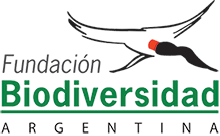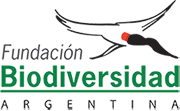Past Projects
2020-2021
The project was financed by the Small Grants Program of the Global Environment Facility (SGP/GEF), implemented by the United Nations Development Program (UNDP) and managed by UNOPS (United Nations Office for Project Services).
Objectives: Training of residents of the towns of Valle Colorado and El Bananal as Tourists Hosts, who make use of the improvements and facilities developed, valuing local biodiversity and obtaining an economic benefit. Positioning of the protected wildlife area El Pantanoso as an important area of conservation, intended for research and environmental education. Knowledge of the functionality of a sector of the Calilegua-Baritú corridor for the Jaguar, to focus conservation efforts in that zone. Reduction of traditional livestock activities. Reduction of illegal hunting of wild mammals.
https://www.ppdargentina.org.ar/proyectos-implementados
2019-2020 Objectives: qualitative evaluation, through a methodology based on the Social Impact Assessment (EIS) and crossed by a critical analysis. Know the impacts at the agency levels in relation to the conservation and sustainable use of the resource based on community cultural patterns; levels of enculturation; modifications in the material conditions of life and in its aspects related to gender, childhood, youth, and the elderly.
2012-2020 Donor: World Land Trust (WLT) Objectives: grant ownership of the land to three Guarani Communities (TekoáImá, KapiíVaté and ItaóMirí). The communities make full use of Lot 8 for traditional self-sustenance activities. The Biodiversity Foundation accompanies the communities in the conservation of the environment.
2015-2016
Executive: La Totora and Foundation Biodiversity Argentina.
Financed by: Global Green Grants Fund.
Objective: Recover good management practices by local communities.
2013-2014
Financed by: Small Grants Program of the Global Environment Facility (SGP/GEF), implemented by the Program of United Nations for Development and administrated by United Nations Office for Project Services (UNOPS).
Objectives: Generate basic infrastructure with local materials. Promote the community organization in order to become ecotourism service providers with territorial identity. Promote, through environmental education, the collective actions of conservation and sustainability in Bañado. Strengthen the subsistence economy with genuine income from environmentally sustainable practices. Contribute to the conservation of Bañado La Estrella.
2012-2017
With the support of the Japan Wildlife Research Center (JWRC), the Japan International Cooperation Agency (JICA) and the Government of the Province of Formosa.
Objectives: Conservation and sustainable use of natural resources as a genuine tool that contributes to improving the quality of life of local residents, promoting the knowledge about their environment value and the benefits that the benefits that their proper management could generate for these communities.
2012-2013
With the support of the International Fund for Agricultural Development (FIDA)
Objectives: Identification of producers. Digital literacy. Policy Dialogue, to improve all the production, transformation and the commercialization sectors as an effective tool in order to augment the income of the communities and the production value of the camélido sector.
2010
Wildlife Conservation Society (WCS)
The importance of incorporating health studies into the biological monitoring carried out on boas populations under hunting pressures lies in the need to have healthy populations that guarantee the sustainability of the activity. The health monitoring of the boas was an initiative in conjunction with Foundation Biodiversity (FB) and the Global Health Program of the Wildlife Conservation Society (GHP-WCS), under the supervision of the Ministry of Production and Environment of the province of Formosa, within the framework of the Program for the use of the species.
With the support of Alemania, Netherlands and Switzerland.
Palo Santo today is included in Appendix II of the Convention on the International Trade of Endangered Species of Wild Fauna and Fora (CITES), which guarantees international regulation of trade in its wood, as well was other products and derivatives.
2007-2009
With the support of the authority CITES Argentina and the Government of Belgium.
Objectives: Compilation of background on the Lampalauga boa (historical records with environmental and landscape variables, to later propose an original distribution area of the species in the country).
2006
With financial support from the Federal Investment Council (CFI) and the participation of the Ministry of Production of the province of Formosa within the framework of the Curiyú Program.
The Learning Route is an educational modality developed by the Regional Rural Development Training Program PROCASUR. It is an itinerary with strategic stages, conceived according to the logic of a continuous learning process, with predefined themes and research/observation approaches. It proposes, in an alternating way between workshops, interviews, and field visits, multiple spaces for exchanges, analysis and reflection (individual and group), with the testimonies and participation of all actors involved, in order to reach the most integral, systemic, and dynamic vision possible, on the process of tanning and transformation of Curiyú leather.
2002 – 2003
Center for Environmental Research and Conservation (CERC) – Columbia University, NY.
The objective of this project consists of studying the genetic structure of the Curiyú populations along their distribution in Argentina with an emphasis on the province of Formosa, Argentina, with the end goal of helping to build a reliable strategy for the conservation and sustainable management of the species in the country.

